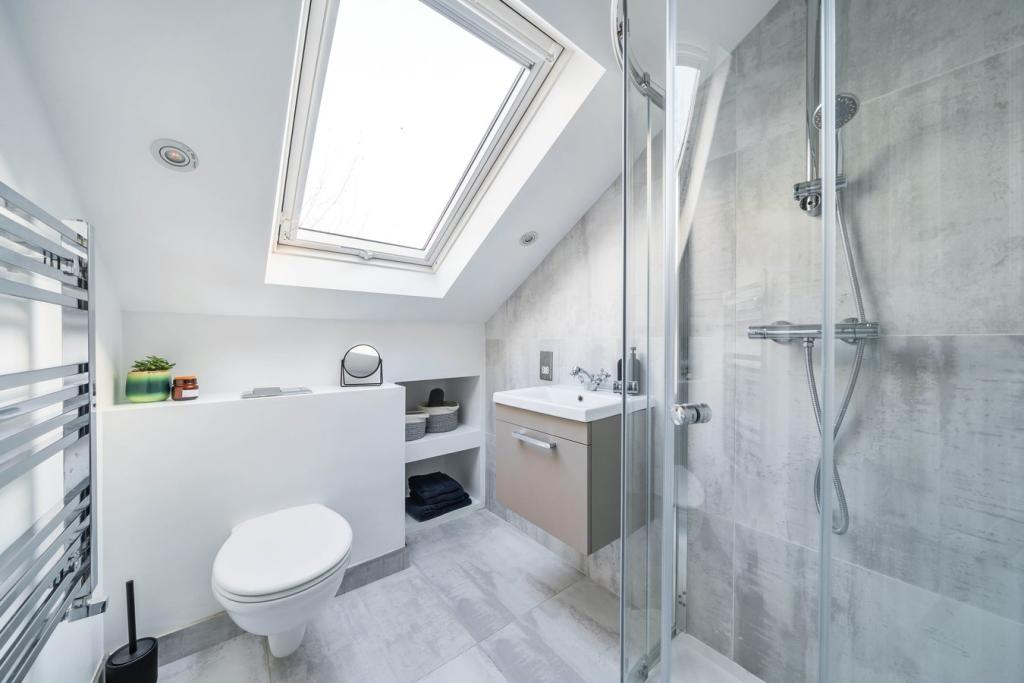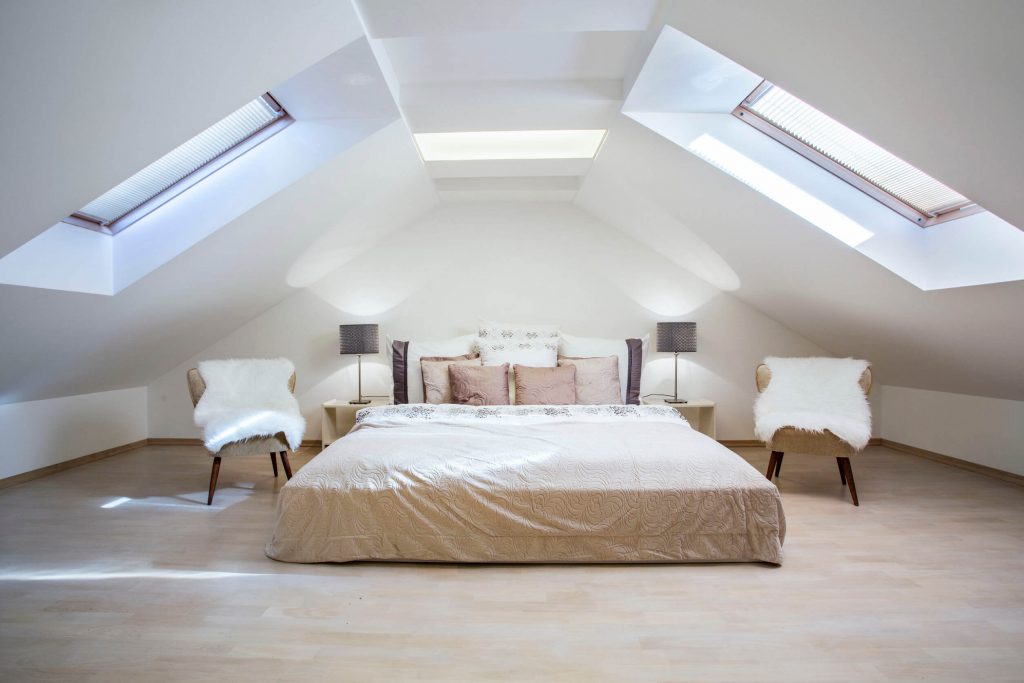Loft Conversion Tips
How Much Does a Loft Conversion in London Cost?
April 17, 2023

The cost of a loft conversion in London can vary widely depending on several factors, such as the type of conversion, the size of the space, and the materials used. Generally, the cost of a loft conversion in London can range from £20,000 to £50,000, and sometimes more for larger or more complex projects.
It's important to note that loft conversion costs can be higher in London due to higher labour and material costs compared to other parts of the UK. Additionally, the cost may be affected by the location of the property, accessibility, and whether any additional work, such as plumbing or electrical work, is required.
To get a more accurate estimate of the cost of your loft conversion project in London, it's best to consult with a professional loft conversion company. They can provide you with a detailed breakdown of costs based on your specific project requirements and provide you with a more accurate estimate.
How do you calculate the cost?
Calculating the cost of a loft conversion can be challenging, as it can depend on many different factors. Here are some of the key factors to consider when estimating the cost of a loft conversion:
Type of loft conversion: Different types of loft conversions have different costs. For example, a dormer loft conversion may be less expensive than a mansard loft conversion.
Size of the loft: The larger the loft space, the higher the cost is likely to be. However, larger spaces may also be able to accommodate more features, such as an en-suite bathroom or additional storage.
Structural work required: If structural work is required to support the loft conversion, such as adding steel beams, this will add to the cost.
Materials used: The cost of materials used for the loft conversion can vary depending on the quality and type of materials chosen.
Electrical and plumbing work: If the loft conversion includes adding electrical or plumbing work, this will add to the cost.
Labour costs: Labour costs will depend on the complexity of the project and the hourly rate of the contractors.
To get an accurate estimate of the cost of a loft conversion, it's recommended to get quotes from several reputable loft conversion companies. They can assess your specific requirements and provide a detailed breakdown of costs, including materials, labour, and any additional expenses such as planning permission or building regulations. It's important to keep in mind that loft conversion costs can vary, so it's best to get multiple quotes to compare prices and ensure you are getting a fair price.
How to Plan your Loft Conversion
November 28, 2022

One of the most important things to think about when planning a loft conversion is the design. You should also consider what furniture you'll need to furnish the new space. It's best to shop for items in advance, so you can have them delivered in a timely manner. Lastly, you should consider whether to keep the new furniture in your home or move it into the loft after the conversion is complete.
Planning permission
If you want to convert your loft into a bedroom, you will need planning permission. Although loft conversions are often done without a planning permit, it is a good idea to seek permission from the local authority to protect the value of your property and ensure that any changes do not cause any harm to your neighbors. Generally, a standard loft conversion does not require planning permission as the work is not likely to have a significant effect on the outside of your property and it will not affect the view or space between neighboring properties.
To get planning permission, you must consult with our architect. This will ensure that your conversion will be approved without any complications. You should also discuss the loft extension plans with our qualified architect before you begin the conversion.
Designing a loft conversion
Designing a loft conversion is a great opportunity to create extra space. If you've got a spare room on the second floor, you can turn it into an extra bedroom. However, if you have a narrow space, you'll need to consider other features. Built-in wardrobes and shelves are an excellent way to maximise space. You can also include other features such as a study and laundry cupboard.
Another important aspect of loft conversion design is windows. Ideally, 20 percent of the roof area should be glazed to maximize natural light. The shape of the roof will also affect the positioning of the windows. For example, if your room is long and shallow, it makes sense to have windows evenly spaced along its length, while if it's narrow and deep, you might want to opt for a single large window.
Head height requirements
When planning a loft conversion, it's important to know how high the ceiling needs to be. Generally, the minimum ceiling height is two metres, although this can be reduced to 1.8 metres in the middle and 1.9 metres at the edge. This rule is only applicable to newly-built lofts.
Glazing options
There are many glazing options available for loft conversions. Rooflights are a good choice if you want to flood the attic with natural light. However, they don't allow for optimal views of the surrounding landscape. For this reason, rooflight isn't always suitable for conversions with low head heights. If you want to maximize views, skylights with glass fronts may be the better choice.
If you have a listed building, you'll want to ensure you adhere to building regulations. This may mean using a specific type of glazing. This is particularly important if you want to minimize noise or keep internal condensation to a minimum. This type of glazing can be expensive, so be sure to consider the costs before committing.
Insulating a loft conversion
Insulating a loft conversion is an essential step in any loft renovation project. It will not only keep the space warm in winter, but it will also improve energy efficiency in your home. Insulation also helps to keep noise levels down in the home by dampening outside noise. A skilled Architect will be able to advise you on the best insulation for your conversion.
It is also important to consider the roof of your loft conversion. If it is not insulated well, heat will escape. You should also consider the loft conversion regulations, which have recently become stricter. Older loft conversions are unlikely to meet current building regulations.
What are the benefits of a Loft Conversion
November 9, 2022

Benefits of a Loft Conversion
You can increase the value of your home by having a loft conversion, and gain an extra living area. You also can eliminate the hassle of moving house by having additional space. If you are considering a loft conversion, here are some things you should know. You may want to de-clutter your loft and make more use of it.
Common uses of a loft conversion
There are many common uses for a loft conversion, including a bathroom. Adding a bathroom to your home can not only make it more comfortable, but it can also add value to your home. If you are considering a loft conversion, consult an expert to find out if it is possible to add an extra bathroom.
A loft conversion can add value to your home and can make it more energy efficient. The extra insulation helps to reduce your utility costs. There are several different types of loft conversion, including dormer conversion, hip-to-gable conversion, and gable conversion. Dormer conversions are the most common, and they typically feature dormer windows. In addition to adding space to your home, a dormer conversion is a good option if you have a house with a traditional roof structure.
Loft conversions also have many other advantages. They can increase the value of your home, as the addition of a bedroom and bathroom can increase the value of your home by up to 21%. They also help to reduce your energy bills and carbon footprint. Additionally, many buyers will prefer a home that is energy efficient.
Increase in value of your home
A loft conversion is an excellent way to increase the value of your home. Not only does it provide additional space, but it also allows for natural light through roof windows. Having a double bedroom and bathroom in your loft can make your home more sellable. It can even help you make money if you plan to rent out the additional space.
Before undertaking a loft conversion, make sure you have the proper planning permission. This will ensure that you can carry out the conversion legally, which will help increase the value of your home. You should also make sure that your conversion does not clash with other properties in the neighborhood. A loft conversion can add between 10 and 15 percent to the value of your home.
Many homeowners use a loft for different purposes, including bedrooms, home offices, gyms, and games rooms. The extra rooms can increase the value of your property, while the work itself is relatively inexpensive. In fact, some homeowners find that their loft conversion can increase the value of their property by as much as 20%.
Adding extra living space
One of the benefits of a loft conversion is the extra living space it can give you. It is also an excellent way to increase the value of your property. It can give you a second bedroom, or a larger kitchen. You can work from home, or simply enjoy a more spacious environment.
If you have a growing family, a loft conversion can be a great way to create more space without having to move. A loft conversion can also provide extra storage space. This extra space can be used to store winter decorations or even seasonal equipment. In addition, it can be used as a home office.
Eliminating the hassle of moving house
Getting a loft conversion can save you the hassle of packing up and moving house. It is a cheaper alternative to selling your house, and the extra space will also help you save money on Stamp Duty and other expenses. The process of conversion takes very little time, and the inconvenience you experience is minimal. It may require some inconvenience on your part, such as short-term disruption to your daily life, but it will be less troublesome than moving house.
Loft conversions can also help you save on energy bills. You can also make use of the space for storage. There are many options for storage, including storage units larger than your current loft. Storage is also a great way to keep items out of sight but accessible when you need them. In addition, most loft conversions do not require planning permission and fall within Permitted Development Rights, making the process a quick and hassle-free process.